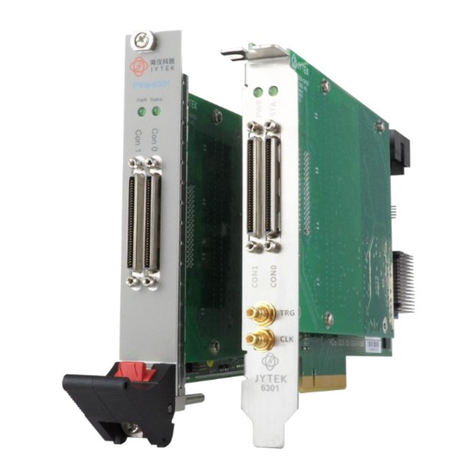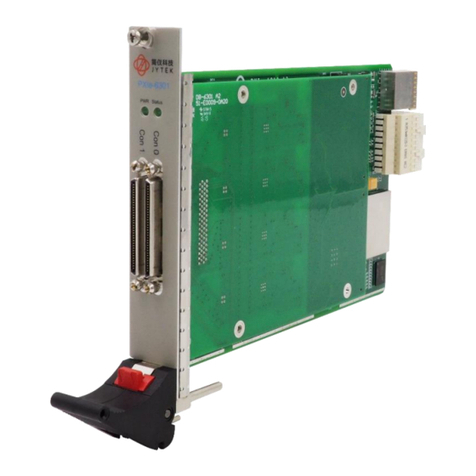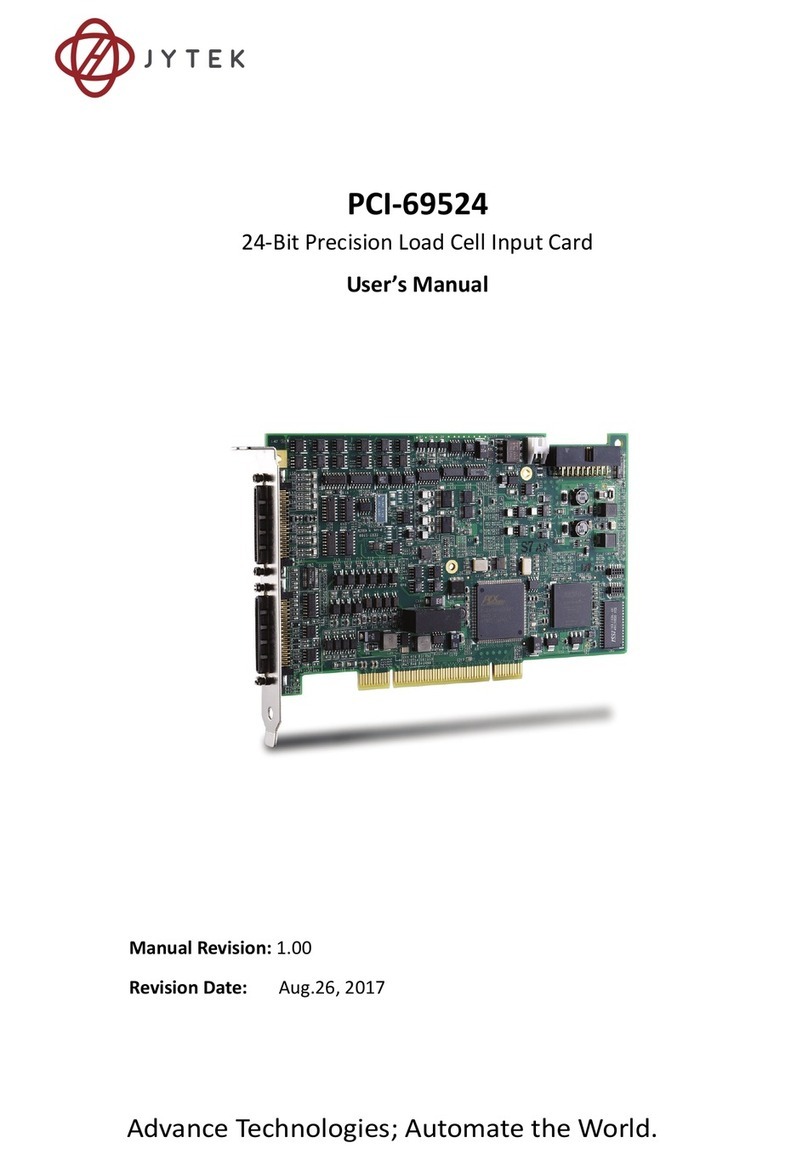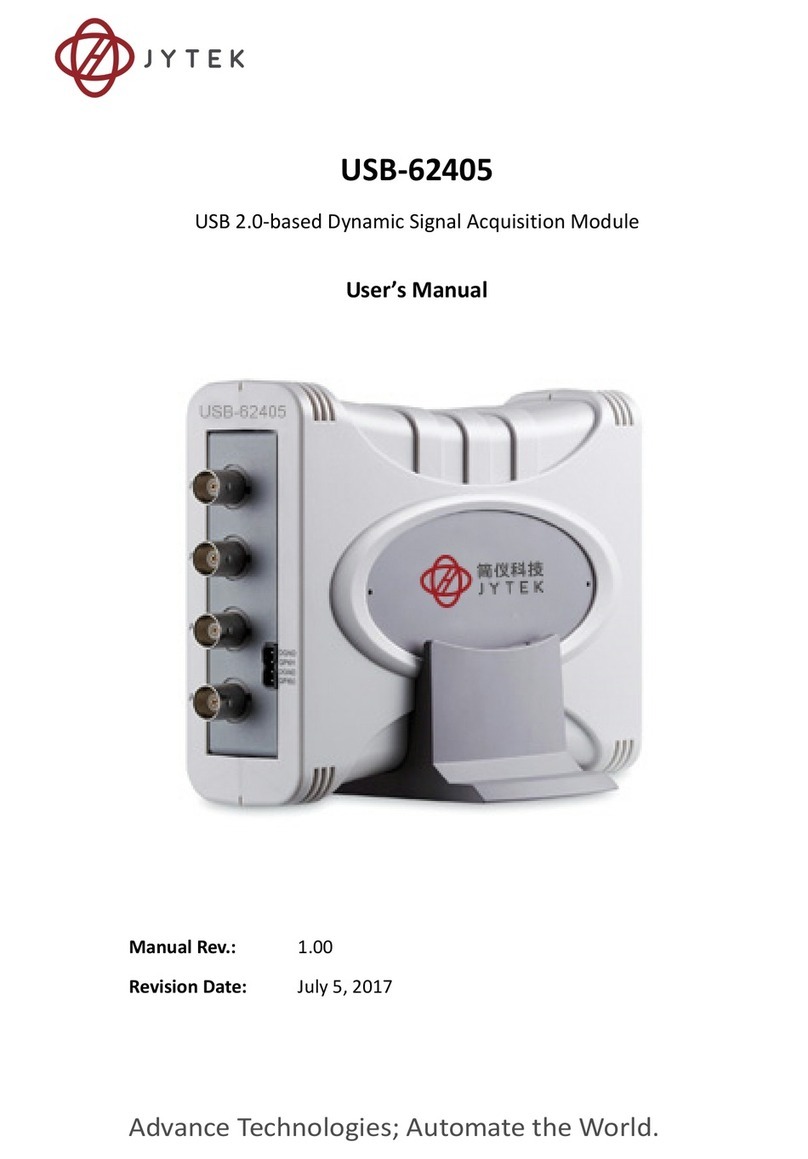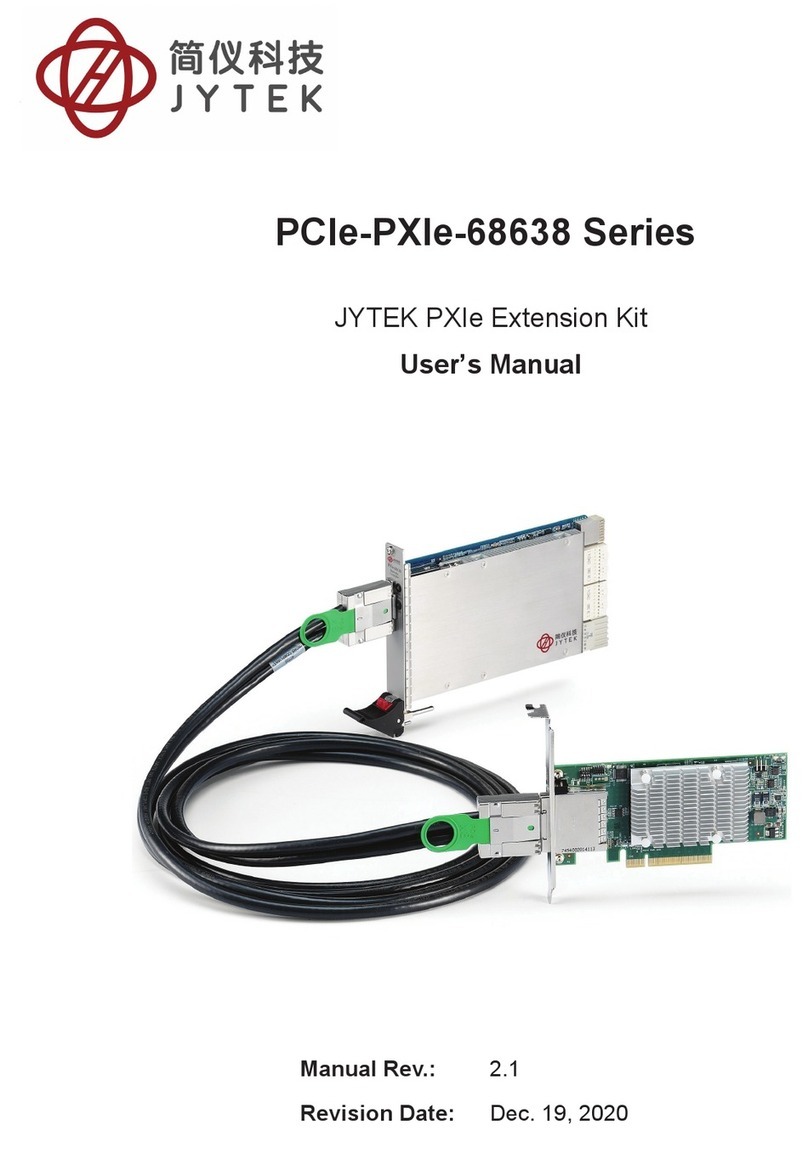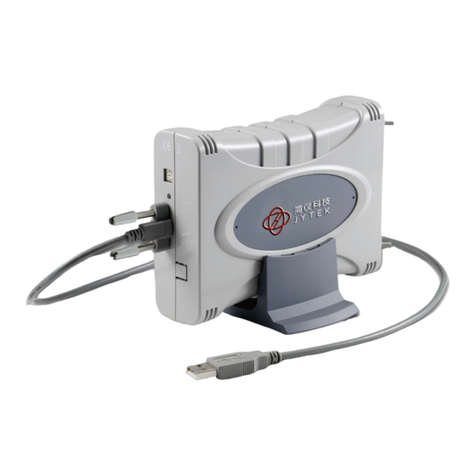
List of Figures iv
List of Figures
Figure 1-1: JYTEK Software Support Overview ..................................... 9
Figure 1-2: DAQPilot Main Interface................................................... 10
Figure 1-3: DAQMaster Device Manager............................................ 10
Figure 1-4: Legacy Software Support Overview.................................. 11
Figure 2-1: PCI-69222/PCI-69223 Layout............................................ 13
Figure 2-2: Floating Source and RSE Input Connections..................... 21
Figure 2-3: Ground-referenced Sources and NRSE Input Connections 22
Figure 2-4: Ground-referenced Source and Differential Input ........... 23
Figure 2-5: Floating Source and Differential Input ............................. 23
Figure 4-1: PCI-69222/PCI-69223 Block Diagram ............................... 28
Figure 4-2: PCI-69222/PCI-69223 AI Circuitry..................................... 29
Figure 4-3: Continuous A/D Conversion Clock Source Block Diagram 31
Figure 4-4: Scan Timing....................................................................... 32
Figure 4-5: Post Trigger without Retrigger ......................................... 35
Figure 4-6: Post Trigger with Retrigger............................................... 35
Figure 4-7: Gated Trigger with Finite Scan Acquisition....................... 36
Figure 4-8: Scatter-gather DMA for Data Transfer ............................. 38
Figure 4-9: FIFO Data In/Out Structure............................................... 40
Figure 4-10: Waveform Generation for Three Channels Update ......... 40
Figure 4-11: Waveform Generation Clock Source Selection................. 41
Figure 4-12: Typical D/A Timing of Waveform Generation .................. 42
Figure 4-13: Post-Trigger Generation ................................................... 43
Figure 4-14: Delay-Trigger Generation ................................................. 44
Figure 4-15: Post-Trigger with Retrigger Generation ........................... 45
Figure 4-16: Finite Iterative Waveform Generation with Post-trigger . 46
Figure 4-17: Infinite Iterative Waveform Generation with Post-trigger 47
Figure 4-18: Mode 1 Operation ............................................................ 50
Figure 4-19: Mode 2 Operation ............................................................ 51
Figure 4-20: Mode 3 Operation ............................................................ 52
Figure 4-21: Mode 4 Operation ............................................................ 52
Figure 4-22: Mode 5 Operation ............................................................ 53
Figure 4-23: Mode 6 Operation ............................................................ 53
Figure 4-24: Mode 7 Operation ............................................................ 54
Figure 4-25: Mode 8 Operation ............................................................ 54
Figure 4-26: Mode 9 Operation ............................................................ 55
Figure 4-27: Mode 10 Operation
.......................................................................................... 55
Figure 4-28: Digital Waveform Acquisition Operation.......................... 57
